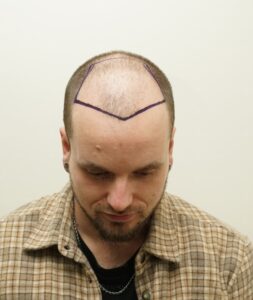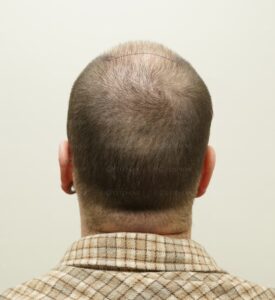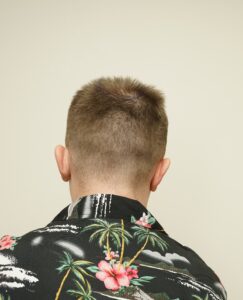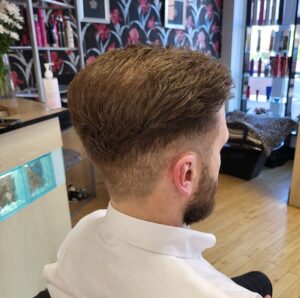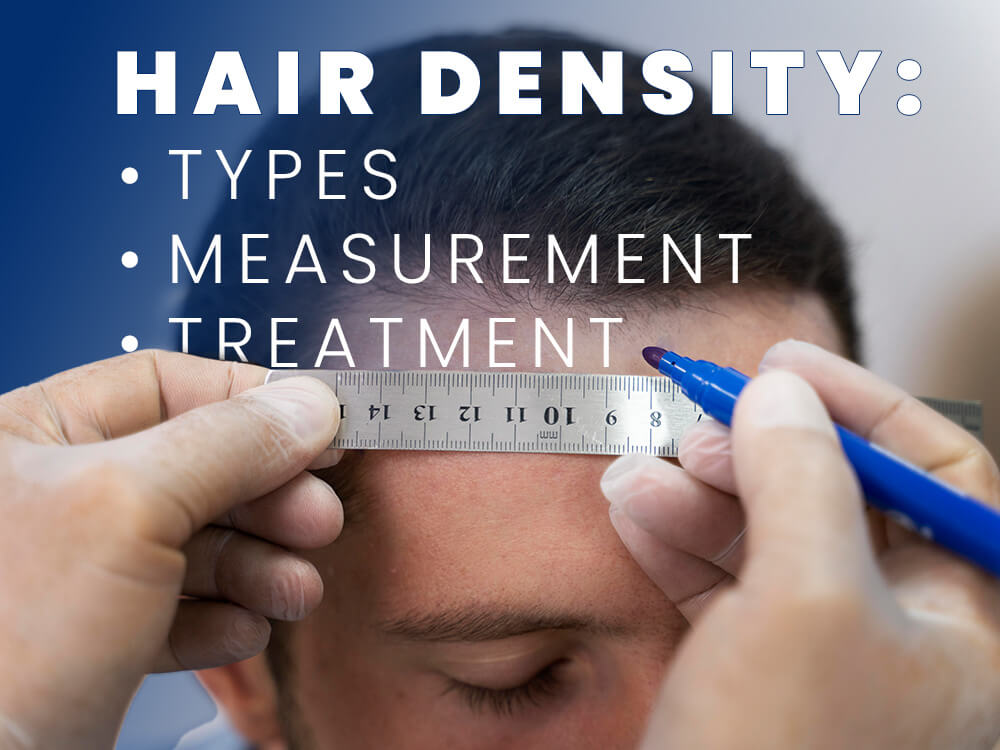
Hair density refers to the number of hair strands that grow on your scalp per square inch. Understanding your hair density is crucial for choosing the right hairstyles and hair care routines. In this article, we will explore the different types of hair density, how to measure it, common problems associated with hair density, and effective ways to increase it.
Understanding Your Hair Density
Understanding your hair density is the first step to maintaining healthy and beautiful hair. Hair density can be classified into three main categories – low, medium, and high. Low hair density means fewer hair strands per square inch, whereas high hair density means more hair strands. Medium hair density falls somewhere in between.
When it comes to low hair density, it’s important to note that having fewer hair strands doesn’t necessarily mean you have less hair overall. In fact, individuals with low hair density may still have a considerable amount of hair, but the individual strands are spaced farther apart. This can create a more airy and lightweight appearance, which can be both a blessing and a challenge when it comes to styling.
On the other end of the spectrum, high hair density can give you a fuller and thicker appearance. With more hair strands per square inch, you may find that your hair has a natural volume and body that many people envy. However, managing high hair density can sometimes be a bit more time-consuming, as it may require extra effort to style and maintain.
For those with medium hair density, you have the best of both worlds. Your hair has a moderate number of strands, allowing for versatility in styling while still maintaining a manageable level of maintenance. Medium hair density often provides a good balance between volume and ease of styling.
Knowing your hair density can help you determine the volume of hair products you should use. For individuals with low hair density, using lightweight products can prevent your hair from being weighed down, allowing it to maintain its natural bounce and movement. On the other hand, those with high hair density may benefit from using slightly heavier products to help control frizz and add structure to their hair.
Understanding your hair density also plays a role in determining how often you should wash your hair. Individuals with low hair density may find that they can go longer between washes, as their hair is less prone to becoming greasy. On the contrary, those with high hair density may need to wash their hair more frequently to prevent it from appearing oily or weighed down.
Furthermore, knowing your hair density can help you choose hairstyles that suit you best. If you have low hair density, opting for styles that add volume and fullness, such as layered cuts or textured updos, can give the illusion of thicker hair. For those with high hair density, styles that embrace the natural volume, like long and flowing locks or voluminous curls, can enhance your hair’s beauty.
Additionally, understanding your hair density can provide insights into the overall health of your hair and scalp. Individuals with low hair density may want to pay extra attention to their scalp health, as a healthy scalp can promote hair growth and prevent hair loss. Those with high hair density may need to be mindful of potential scalp issues, such as excess oil production or clogged hair follicles, which can affect the health of their hair.
Types of Hair Density
When it comes to hair density, there are several factors that come into play, influencing the number of hair strands on our heads. These factors include genetics, age, hormonal changes, and even certain health conditions. Let’s dive deeper into the different types of hair density:
- Low Hair Density: Individuals with low hair density face the challenge of having fewer hair strands compared to others. This can result in a thin appearance and make the scalp more visible. However, there are ways to work around this. For those with low hair density, volumizing products can be a game-changer. These products help create the illusion of fullness, making the hair appear thicker and more abundant. Additionally, layered haircuts are a popular choice for those with low hair density, as they add dimension and volume to the hair, giving it a fuller look. Styling options like these can bring life to low-density hair, boosting confidence and creating a more vibrant appearance.
- Medium Hair Density: Moving on to the most common type of hair density, we have medium hair density. People with medium hair density are fortunate to have a balanced number of hair strands per square inch. This means they have more flexibility when it comes to styling options. Medium hair density provides a fuller appearance and better coverage of the scalp, allowing for a wider range of hairstyles. Whether it’s a sleek bob, a playful ponytail, or elegant curls, those with medium hair density have the freedom to experiment and switch up their look effortlessly. This versatility opens up a world of possibilities, making medium hair density a desirable trait.
- High Hair Density: On the other end of the spectrum, we have high hair density. This refers to an abundance of hair strands per square inch. People with high hair density often find themselves blessed with a thick and heavy-looking mane. While this may sound like a dream come true for some, it can also pose its own set of challenges. Managing high hair density can be a task in itself, as the sheer volume of hair can make it difficult to style and maintain. However, there are tricks of the trade that can help. For those with high hair density, thinning techniques can be a lifesaver. Thinning the hair by strategically removing some strands can help reduce volume and make styling more manageable. Layered cuts are also a popular choice, as they add movement and dimension to the hair. Additionally, updos can be a great option for those with high hair density, as they help keep the hair in place while showcasing its thickness and beauty.
Understanding the different types of hair density allows us to appreciate the uniqueness of each individual’s hair. Whether it’s low, medium, or high density, there are always ways to enhance and embrace the natural beauty of our hair. So, no matter what type of hair density you have, remember that it is a part of what makes you uniquely beautiful.
How to Measure Hair Density
When it comes to understanding your hair, one important factor to consider is hair density. Hair density refers to the number of hair strands on your scalp per square inch. It can vary from person to person, with some individuals having low density, others having medium density, and some lucky ones boasting high density.
So, how exactly can you measure your hair density? Follow these steps to get an accurate assessment:
Step 1: Start by parting your hair down the middle, creating two distinct sections. This division will help you analyze each side individually, ensuring a more precise evaluation.
Step 2: Take a small section of hair from one side and hold it between your fingers. Gently run your fingers through the strands, feeling the thickness and texture.
Step 3: Now, it’s time to observe the space between your fingers. This step is crucial in determining your hair density. If you can easily see your scalp peeking through the strands, you likely have low hair density. This means that there is a significant gap between each hair strand, giving your scalp more visibility.
Step 4: On the other hand, if you can see some scalp but not as much, you might have medium hair density. This indicates that there is a moderate amount of space between each strand, resulting in partial visibility of your scalp.
Step 5: Lastly, if your scalp is barely visible or not visible at all, you have high hair density. This means that your hair strands are closely packed together, leaving minimal to no room for your scalp to show through.
Step 6: To ensure an accurate understanding of your overall hair density, repeat this process in different areas of your scalp. Hair density can vary throughout the head, so it’s essential to assess multiple regions.
Remember, measuring your hair density is not about labeling it as good or bad. It’s about understanding your unique hair characteristics and tailoring your hair care routine accordingly. Whether you have low, medium, or high hair density, embrace your hair’s natural beauty and find the perfect styling techniques that suit you best!
Common Hair Density Problems
Several hair density problems can affect the overall health and appearance of your hair. Let’s discuss some of the common issues:
- Thinning Hair: Thinning hair is characterized by a decrease in hair density over time. This can be caused by genetics, hormonal changes, stress, or underlying health conditions. Proper hair care and lifestyle changes can help slow down the thinning process and promote hair density.
- Excessive Hair Loss: Experiencing excessive hair loss can lead to a decrease in hair density. Factors such as genetics, hormone imbalances, nutritional deficiencies, and certain medical conditions can contribute to excessive hair loss. Identifying the root cause and implementing appropriate remedies can help restore hair density.
- Uneven Hair Density: Uneven hair density refers to an irregular distribution of hair strands on the scalp. This can result in areas with sparse hair and areas with excessive hair density. Uneven hair density can be caused by genetic factors, scalp conditions, or hormonal imbalances. Professional advice and specific treatments can help balance out the hair density.
How to Increase Hair Density
If you are concerned about low hair density or want to enhance your hair’s thickness, there are several effective methods you can try:
- Healthy Diet: A well-balanced diet rich in vitamins, minerals, and proteins is essential for promoting hair growth and density. Include foods such as leafy greens, fruits, lean proteins, and nuts in your diet.
- Scalp Massage: Regular scalp massages promote blood circulation, which can stimulate hair follicles and encourage hair growth. You can use essential oils like lavender or rosemary for added benefits.
- Proper Hair Care: Properly caring for your hair can prevent breakage and promote overall hair health. Avoid excessive heat styling, use gentle hair products, and protect your hair from environmental damage.
- Lifestyle Changes: Reducing stress levels, getting enough sleep, and exercising regularly can contribute to healthy hair and increased hair density.
- Hair Transplantation: Hair transplantation is a proven and reliable solution for increasing hair density. Our skilled professionals utilize advanced techniques, such as Follicular Unit Extraction (FUE) and Direct Hair Implantation (DHI), to extract healthy hair follicles from donor areas and transplant them to areas with low density, resulting in natural-looking hair growth.

